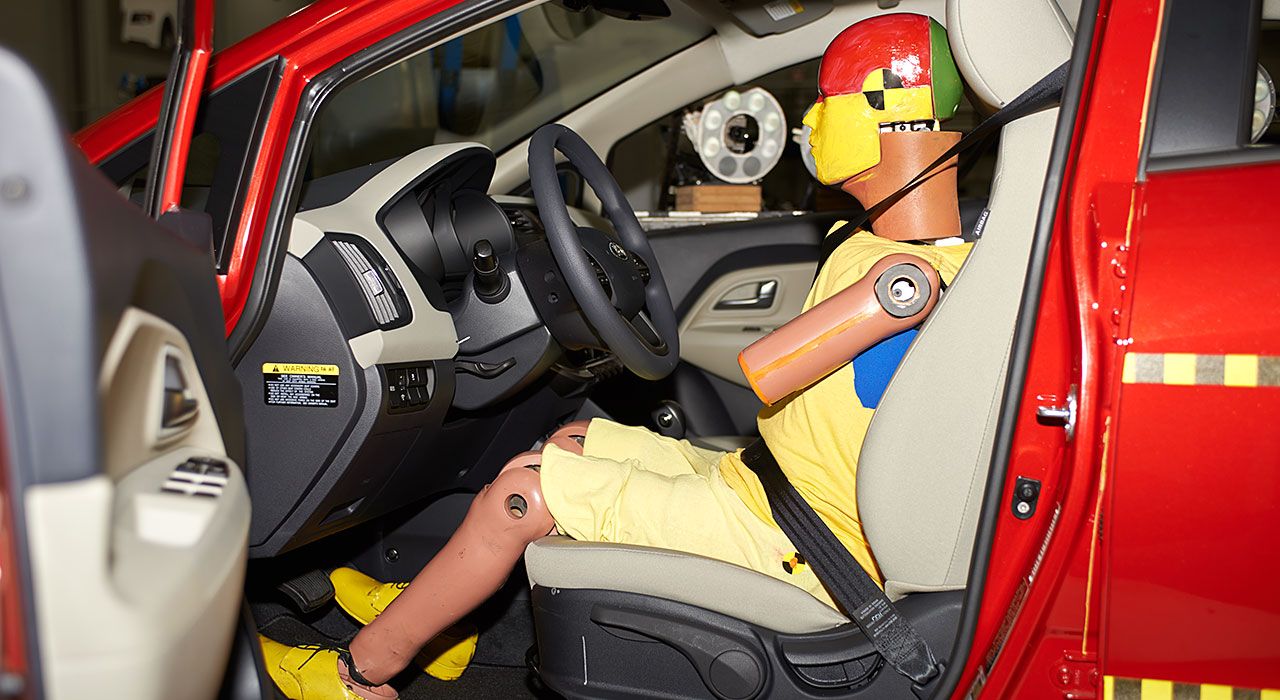Rear-seat crash-test dummies are about to become a real thing after the National Highway Traffic Safety Administration revealed plans to begin using these dummies in back seats beginning in 2019. The move comes in the wake of increased emphasis being put on the safety of back-seat passengers, including children sitting in car seats. In case you’re wondering why it took this long for the NHTSA to make this move in light of the fact that its 5-Star Safety Ratings Program began all the way back in 1978, well you’re questions are as good as ours.
The truth is that equal safety attention being paid to rear-seat passengers should have been done a long time ago, maybe even as early as when the NHTSA’s ratings program started. But for one reason or another, that program only paid attention to the safety->ke2860 of the driver and the front-seat passenger and the advancements that have been made in that area hasn’t extended to the occupants at the back of the car.
As far as the ways on how to address the safety of rear-seat passengers are concerned, there are have been some suggestions on that front, including the use of air bags in the back, improvements to the seat belts, or developing rear seats that can also absorb shock the same way that front seats do. Even the advancements in the front seats have brought about unintended consequences for those seating behind them, including their capacity to collapse in rear-end collisions, which could lead to the seats hitting back-seat passengers, as was the case of a 16-month girl who lost her life because the front seat of the car she was in collapsed and hit her head.
Suffice to say, the NHTSA will have a tough time addressing this challenge. There have been some ideas like side-impact air bags and inflatable seat belts that have been thrown around and discussed. The use of the rear-end crash dummies could also help access key information on what steps need to be done to address the issue. For now, though, there are still a lot of unanswered questions as to how the agency would tackle the issue, and the sooner the NHTSA clears it up and presents its plan, the clearer this picture is going to be.
Continue after the jump to read the full story.
Why it matters
This issue has been swept under the rug for too long, so it’s a good thing that more attention is now being paid to it. I don’t claim to be an expert in automotive safety, but something has to be said that the NHTSA hasn’t given the kind of attention as it should have for so long.
Kristy Arbogast, engineering director of the Center for Injury Research and Prevention at Children’s Hospital of Philadelphia said it best when she told Bloomberg that “people assume a 5-star rating extends to all seating locations, but it doesn’t; the back seat hasn’t kept up.” It might be uncomfortable to hear for those who aren’t aware of it, but it’s true.
I will agree that there’s a thin line between balancing the safety of a set of occupants with another set, and the way these cars are built are complicated enough that striking that balance can be difficult. But shouldn’t have there been more effort put into addressing the safety concerns of the rear-seat passengers? I’m not saying that they’re more important than the driver and the front-seat passenger. I’m saying that they’re equally important and if the safety of the people in the front of the car is strengthened while those at the back are compromised, then yeah, something needs to be done to make sure that people at the back of a car are given their proper importance.
To be honest, I don’t what that safety compromise will be. I don’t know how the NHTSA is going to move past the introduction of rear-seat crash-test dummies. But I will say that introducing it to address the glaring lack of attention being put into the safety of the rear-seat passengers is a good start. Maybe now that there’s focus being put on it, the people and the institutions that can make a difference will pool their resources together to ensure that rear-seat passengers are kept just as safe as their counterparts in the front.

